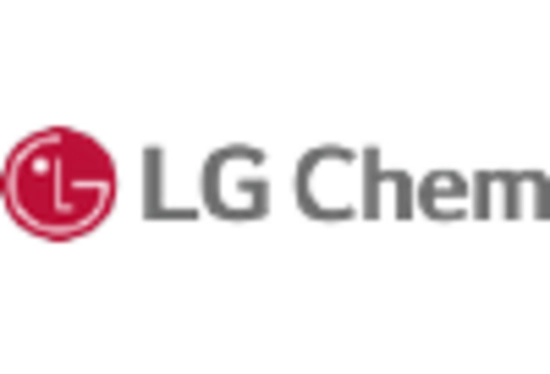Expansion of End-Use Industries
The Phenol Derivative Market is significantly influenced by the expansion of end-use industries such as pharmaceuticals, agriculture, and personal care. The pharmaceutical sector, in particular, has shown a growing inclination towards phenolic compounds for their antiseptic and preservative properties. In 2023, the pharmaceutical application segment represented around 25% of the total market share, reflecting a strong demand for phenol derivatives in drug formulation. Additionally, the agricultural sector's increasing reliance on phenolic derivatives for herbicides and pesticides further contributes to market growth. As these industries continue to evolve and expand, the Phenol Derivative Market is poised to benefit from the rising consumption of phenolic compounds, which are integral to various formulations and products. This expansion is likely to create new opportunities and drive innovation within the market.
Rising Demand for Phenolic Resins
The Phenol Derivative Market is experiencing a notable increase in demand for phenolic resins, which are widely utilized in various applications such as automotive, construction, and electronics. This surge is attributed to the growing need for durable and heat-resistant materials. In 2023, the phenolic resin segment accounted for approximately 30% of the total phenol derivatives market, indicating a robust growth trajectory. As industries seek to enhance product performance and longevity, the reliance on phenolic resins is expected to escalate, thereby driving the overall market. Furthermore, the trend towards lightweight materials in automotive manufacturing is likely to bolster the demand for phenolic resins, as they offer a favorable strength-to-weight ratio. Consequently, this driver is pivotal in shaping the future landscape of the Phenol Derivative Market.
Technological Innovations in Production
Technological innovations play a crucial role in shaping the Phenol Derivative Market. Advances in production techniques, such as the development of more efficient catalytic processes and the integration of automation, are enhancing the yield and quality of phenol derivatives. In 2023, it was estimated that technological improvements contributed to a 10% increase in production efficiency across the industry. These innovations not only reduce production costs but also minimize environmental impact, aligning with the growing emphasis on sustainability. As manufacturers adopt cutting-edge technologies, the Phenol Derivative Market is likely to experience accelerated growth, driven by enhanced operational efficiencies and the ability to meet rising consumer demands for high-quality products. This trend suggests a promising future for the industry as it adapts to changing market dynamics.
Increasing Awareness of Health and Safety
The Phenol Derivative Market is witnessing a heightened awareness of health and safety standards, which is influencing the demand for safer chemical products. As consumers and industries become more conscious of the potential hazards associated with chemical exposure, there is a growing preference for phenolic derivatives that meet stringent safety regulations. In 2023, approximately 20% of the market was driven by products that comply with enhanced safety standards, reflecting a shift towards safer alternatives. This trend is particularly evident in sectors such as personal care and pharmaceuticals, where product safety is paramount. Consequently, manufacturers are compelled to innovate and reformulate their products to align with these safety expectations, thereby driving growth in the Phenol Derivative Market. This increasing focus on health and safety is likely to shape product development and market strategies in the coming years.
Regulatory Support for Chemical Manufacturing
The Phenol Derivative Market is bolstered by regulatory support aimed at enhancing chemical manufacturing processes. Governments are increasingly implementing policies that promote sustainable practices and the use of eco-friendly chemicals. This regulatory environment encourages manufacturers to invest in advanced technologies that improve the efficiency and safety of phenol derivative production. In 2023, approximately 15% of manufacturers reported adopting greener technologies in their production processes, which aligns with regulatory expectations. Such initiatives not only enhance the market's sustainability profile but also attract investments, thereby fostering growth. As regulations continue to evolve, the Phenol Derivative Market is likely to witness a shift towards more sustainable production methods, which could further enhance its competitive edge in the chemical sector.


















Leave a Comment